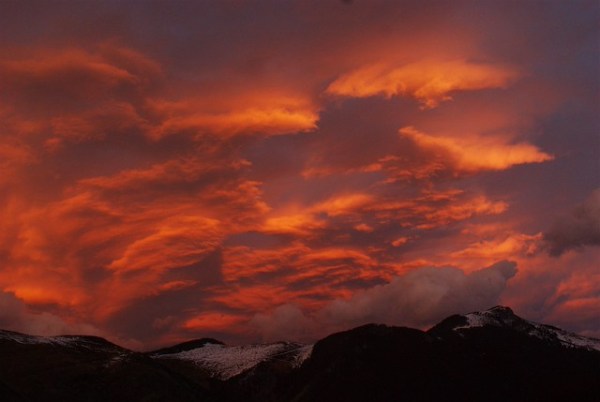Twilight as defined by Wikipedia is the illumination of the Earth’s lower atmosphere when the Sun itself is not directly visible because it is below the horizon. Twilight is produced by sunlight scattering in the upper atmosphere, illuminating the lower atmosphere so that the surface of the Earth is neither completely lit nor completely dark. The word “twilight” is also used to denote the periods of time when this illumination occurs.
The further the Sun is below the horizon, the dimmer the twilight (other things such as atmospheric conditions being equal). When the Sun reaches 18 degrees below the horizon, twilight’s brightness is nearly zero, thus evening twilight ends, and night begins. When the Sun again reaches 18 degrees below the horizon, night ends and morning twilight begins. Owing to its distinctive quality, primarily the absence of shadows and the appearance of objects silhouetted against the bright sky, twilight has long been popular with photographers, who refer to it as ‘sweet light’, and painters, who refer to it as the blue hour, after the French expression l’heure bleue. ( https://en.wikipedia.org/wiki/Twilight )
 This may demand a little more planning on your part as you will only have limited opportunities to do this and each opportunity lasts but only a few minutes. True that the end of the Twilight hours give us a deep blue sky to work with, there’s also a multitude of colors that can be produced in front of your eyes. The above image of the silhouetted tree has them all, from a soft golden glow to our deep blue sky.
This may demand a little more planning on your part as you will only have limited opportunities to do this and each opportunity lasts but only a few minutes. True that the end of the Twilight hours give us a deep blue sky to work with, there’s also a multitude of colors that can be produced in front of your eyes. The above image of the silhouetted tree has them all, from a soft golden glow to our deep blue sky.
 Not all images need to have a silhouette. This river was photographed as the sun had just set. Although a long exposure for a handheld image, everything is lit in an array of warm colors.
Not all images need to have a silhouette. This river was photographed as the sun had just set. Although a long exposure for a handheld image, everything is lit in an array of warm colors.
Remember, we’re not looking for a sunset or a sunrise. We’re looking for the light and the effect of this light just prior to sunrise or past sunset. The window of colors will be short and a bit of planning and technique may make all the difference. To keep track of where and when the sun will set and rise you may want to refer to the Photographer’s Ephemeris (TPE) ( https://app.photoephemeris.com ) free to use on the web app.
If you want to challenge yourself and produce an image similar to the one above, you’ll need a few tools.
- Steady tripod
- ND (Neutral Density Filters) ; optional https://en.wikipedia.org/wiki/Neutral_density_filter
- Graduated Neutral Density Filters https://en.wikipedia.org/wiki/Graduated_neutral_density_filter
- Camera Shutter Remote
Since the light in the sky will be brighter you may want to put graduated neutral density filters to good use. This will reduce the sky’s illumination, balancing it with the poorly lit subject, I.E. the ground and water. The ND filter will also increase your exposure time by evenly reducing light coming through your lens, giving you a silky look to your water. The Tripod and shutter release will help you keep everything stable as you may be exposing for a few seconds to a few minutes.
You may also want to refer to this article from weatherscapes.com. Sunrise and sunset phenomena: what to discover, when, and where: https://www.weatherscapes.com/techniques.php?cat=optics&page=twilight
As this is Nature and wildlife, keep human objects such as houses, bridges and fences out of your images. There’s often a way to compose an image to give the illusion of complete nature without using Photoshop.
The sky’s the limit for this week’s challenge. Get out there and show us what Mother Nature has to offer! Nature and Wildlife photography can also be a great family activity.
The rules are pretty simple:
- Post one original (Your Image) shot each week per theme posted on this blog to Google+, Facebook, or Flickr (or all three). Tag the photo #photochallenge.org. or #photochallenge2014.
- The shot should be a new shot you took for the current weekly theme, not something from your back catalog or someone else’s image.
- Don’t leave home without your camera. Participating in the 2014 Photo Challenge is fun and easy.




You must be logged in to post a comment.